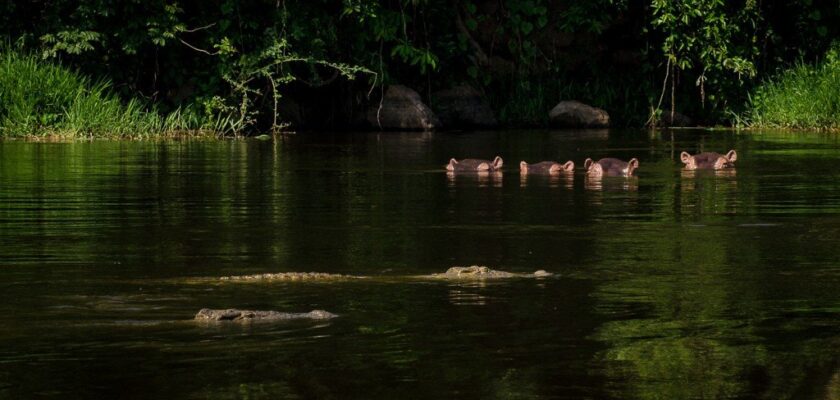Murchison Falls
Murchison Falls is Uganda’s largest waterfall and is divided in two by the Nile River. Close to the river, the northwestern savannahs of the park are home to buffalo, antelope, Rothschild’s giraffes and elephants, while the southwestern rainforests are home to large groups of chimpanzees, green monkeys and anubis baboons (Dogger’s baboons).
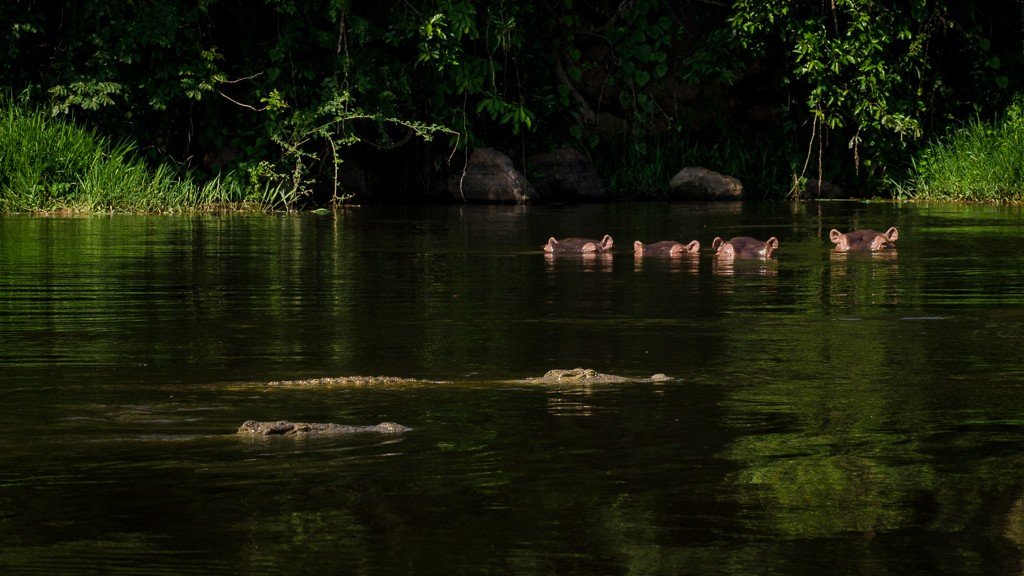
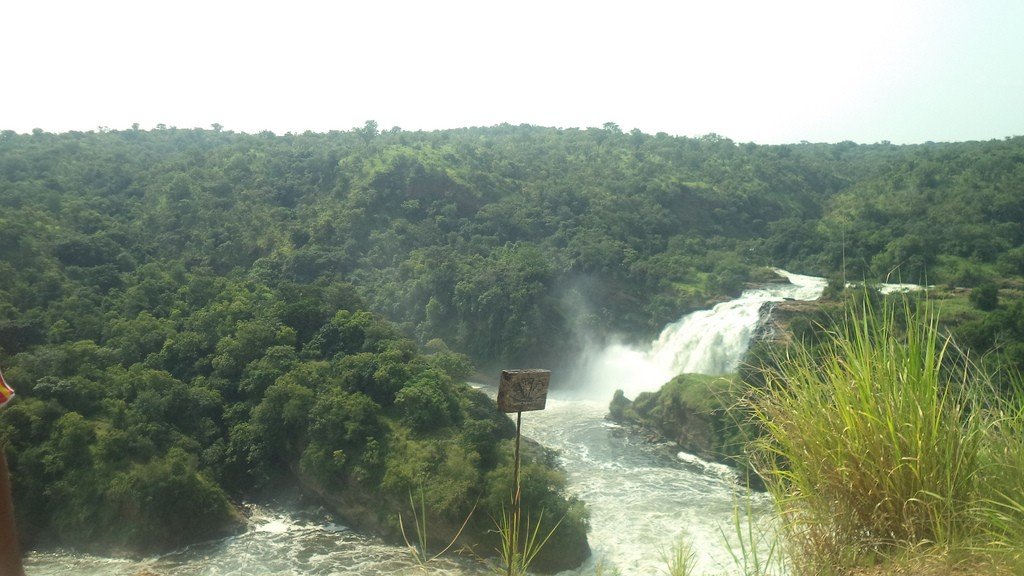
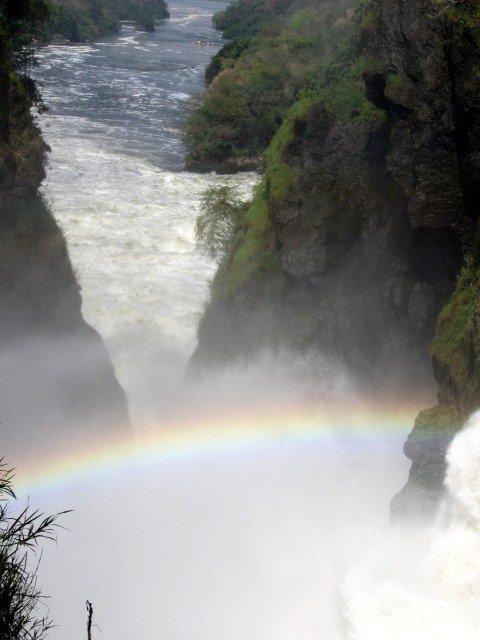
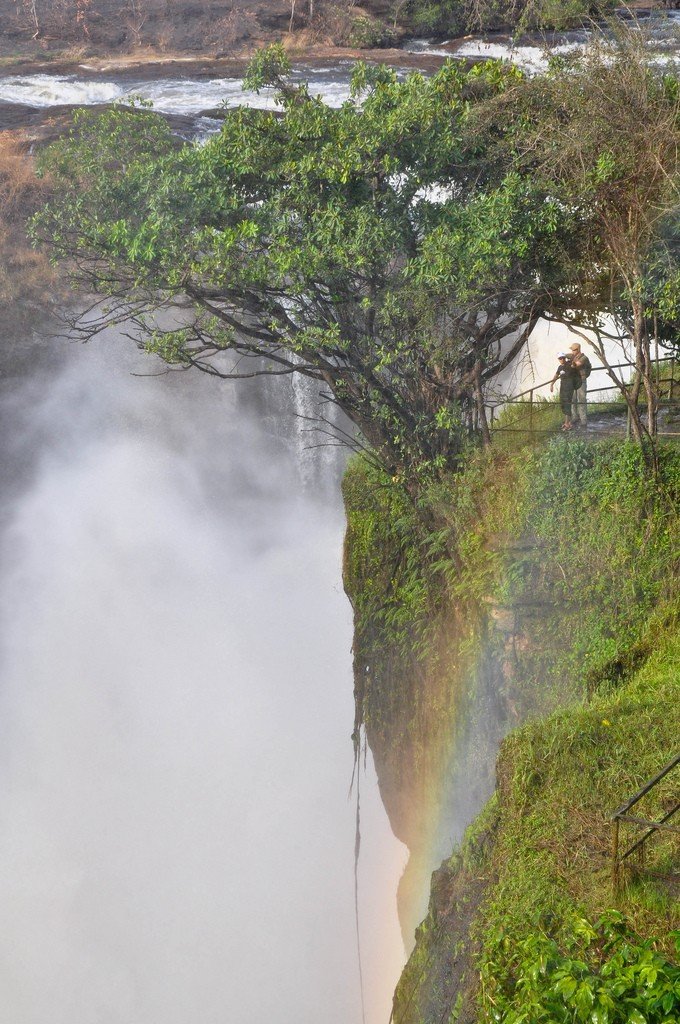
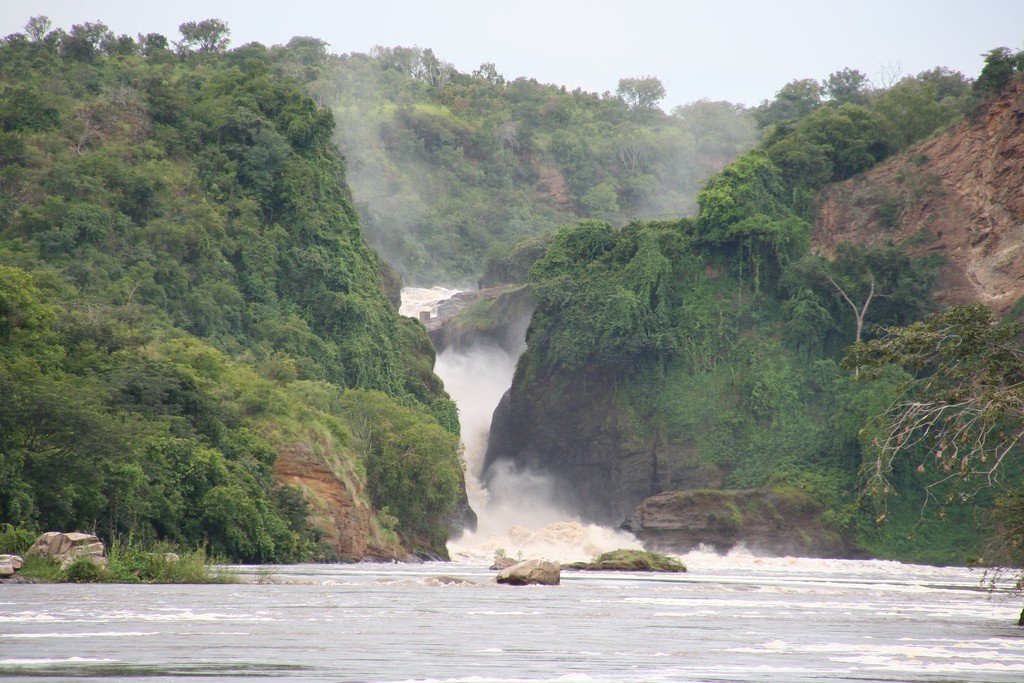
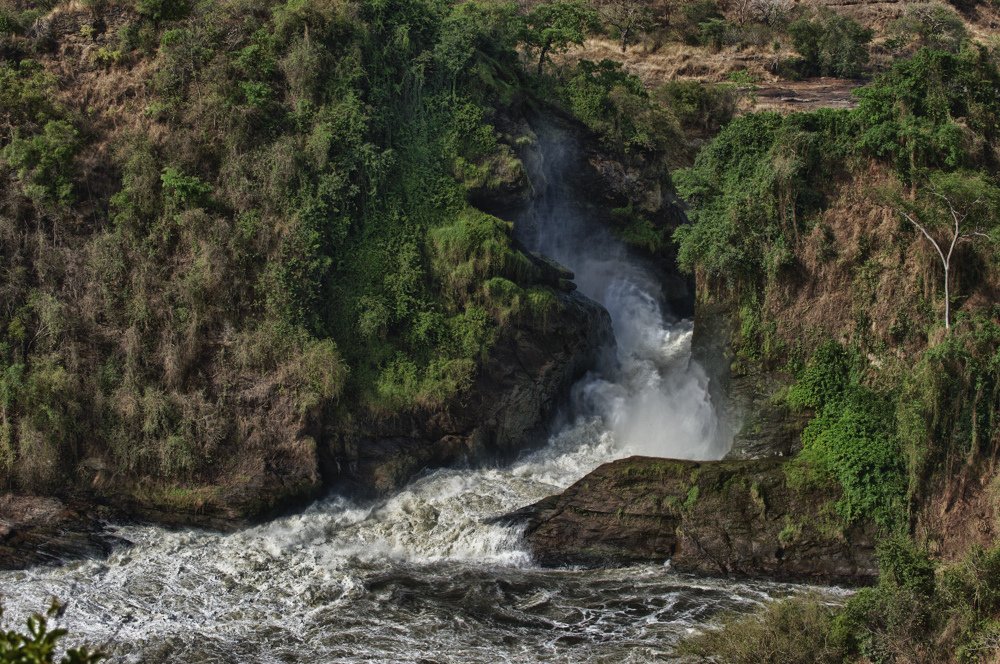
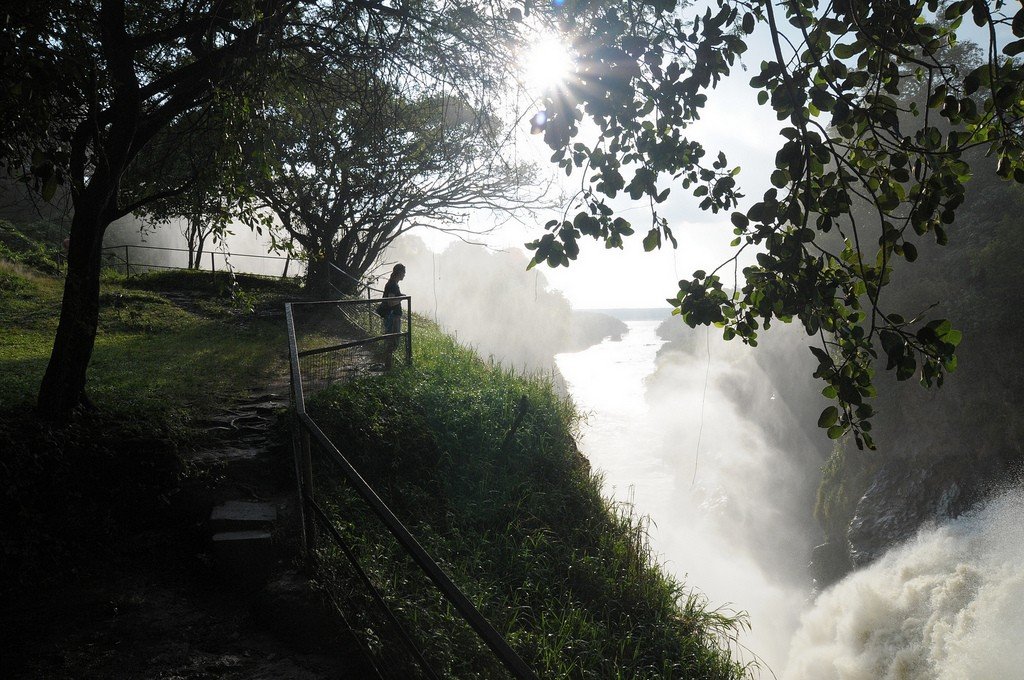
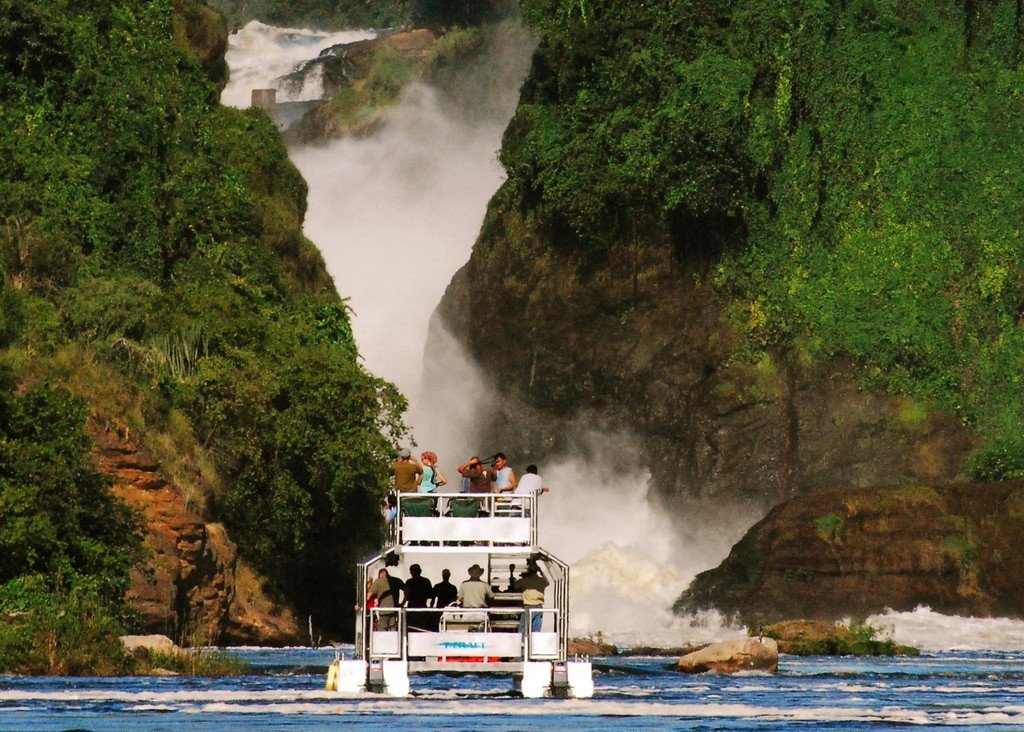
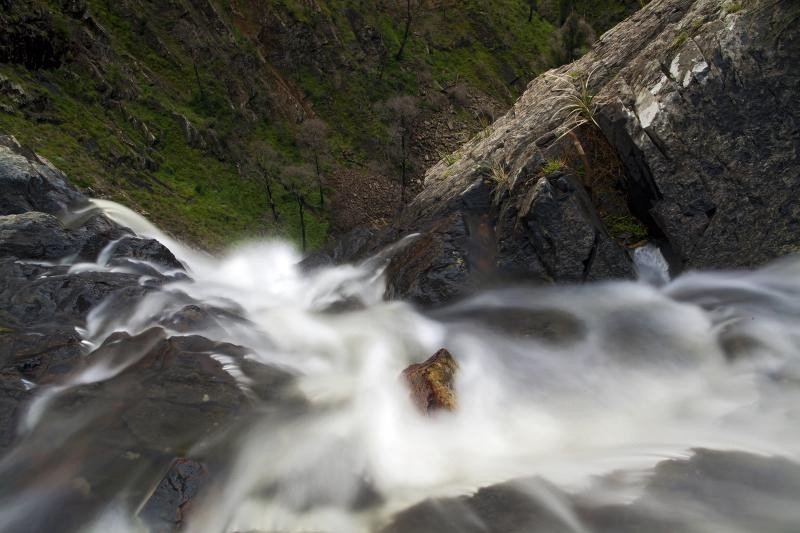
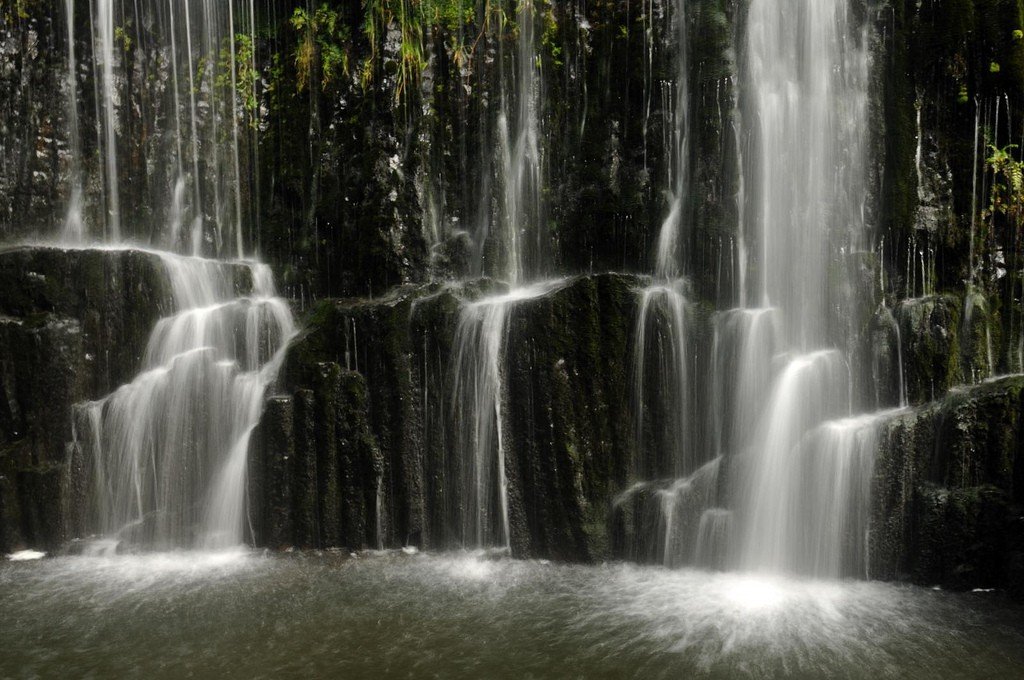
General information
The roaring Murchison Falls are most conveniently viewed from a boat. Here the Nile plunges down from a height of 40 meters. During a river cruise you can watch hundreds of hippos roam the banks, keeping company with the numerous Nile crocodiles. Those who wish to do so are invited to view the falls from a path that goes from the top down to where the water breaks into small splashes.
.Beneath the south bank of the falls on the Bat Cliffs, thousands of man-eating birds nest, and late at night they go foraging like huge black crows. Giant kingfishers and fish owls perched on several branches above the water, while pennant goats fly over herds of marsh goats and cow antelope (Jackson’s bubal). Murchison Falls is without a doubt a sight not to be missed.
.
Don’t be startled to see the dirty white flakes floating down the river – that’s foam whipped up by a powerful cascade. Most guests spend the night on the south bank of the Nile, and all the interesting things live on the north, so at dawn a string of jeeps lined up at the entrance to the ferry. By noon the vehicles are back at the ferry and it’s time to transfer to the boat. On the way to the falls, there is a chance to see animals splashing in the river waves. The Murchison Falls itself charges the air with its power like a high voltage generator. Just imagine how much water it takes to fill a 6,700-kilometer-long channel! Now imagine all that water rushing through a 6-meter gap in the sheer cliffs – that’s Murchison Falls.
.Murchison Falls National Park
In Uganda, the first national park was established in 1951, the current Queen Elizabeth National Park. A year later, Murchison Falls – Ugandans pronounce it as “Makishon Falls” – was declared a national park. The first European visited the area in the spring of 1864, an Englishman named Samuel Baker. He discovered Lake Albert and was the first to discover an interesting peculiarity: the Nile flows into the lake at its northern end, only to immediately burst out of it with an even more powerful stream. Baker realized that the two channels belonged to the same river, but for convenience he gave them different names – Victoria Nile and Albert Nile. Going upstream on the Victoria Nile, the traveler came across a waterfall, which he named after Roderick Murchison, president of the Royal Geographical Society. In those years, the southern part of the present-day park was part of the kingdom of Bunyoro, whose ruler Kabarega tried to fight the British in the early 1890s. In the 1970s, Idi Amin renamed the park and waterfalls after Kabarega, but the new name did not catch on.
.
The main “highlight” of the park is the diversity of landscapes. To the south of the river reigns forests, and on the northern begins savannah, gradually passing into semi-desert. Add to this the cliffs of the waterfall, picturesque coastal steeps and the swampy lowlands of the river mouth. In 1907, W. Churchill traveled on horseback from Masindi to see the falls. The cult politician was close to everything connected with the Nile: in 1898 he fought in the Sudan and wrote a book about it. In 1909, the retired American president Theodore Roosevelt, who was more interested in hunting than history, visited Murchison Falls. The first star visitor to the new national park was Ernest Hemingway in 1954. That same year, the park became home to a residence for distinguished guests from the British royal family. The modest residence is called Queen’s Cottage and is part of the Paraa Safari Lodge Hotel.
.A convenient way to see the Murchison Falls is to buy a tour from one of the Ugandan tour companies. Most of them are based in Kampala, with safaris starting there. The best known is Red Chilli Hideaway (Kampala, +256-031-2202903, 041-4223903, +256-0772509150; www.redchillihideaway.com). They own Red Chilli Rest Camp (lodging from $20, pitch a tent $5), located just off the Paraa Ferry. A three-day program including transportation, meals, camping and park admission costs the Peppers $270. Others offer the same at $360-$420.
. Such tours are designed for up to 6 participants. If the people in the car will be less, the difference is offered to pay extra. Individual trip can also be organized – for example, the company Kabiza Wilderness Safaris (Kampala, +256-0774785852; www.kabiza.com) specializes in this. .To go to Murchison Falls on your own, you can either drive a personal car or use public transportation (tiring!). From Kampala, it is better to leave closer to noon and overnight in Masindi (New taxi park and Main bus Station, 10000-13000 sh.). This town was once an important point on the route linking East Africa with Congo. From Lake Kyoga there is a highway that still takes you to Butiaba on Lake Albert. Already in the 30’s steamships ran on the lake between Uganda and Congo, but then the railroad withered away and the ships were partly lost in the floods of 1962, partly cut up for scrap.
.Masindi is very small with only two main streets intersecting in the center of the town. Port Rd. houses bank branches, hotels and the post office, while Market St. houses the market and bus station. The only landmark is the Masindi Hotel (22-34 Masindi Port Rd., (+256-046-5420023; +256-0772420130; www.masindihotel.com), built in 1923, the oldest hotel in the country and a historical monument. Walk along Port Road in the opposite direction to the one from which you entered the city (10 min.). After passing the police station, look to the right. The one-story building behind a brick fence was damaged during the civil war, but was bought by a family of Aden natives in 2000. They have completely restored the 1920s finishes, decorating the interiors with carved wood paneling. You can see animals, scenes of Bunyoro natives and African explorers. If you face the main entrance, to your left is the wing of the building where Humphrey Bogart and Katharine Hepburn, stars of the 1950 war movie “The African Queen,” lived. The Queen was filmed in neighboring Congo and on Lake Albert, with some episodes filmed on Lake Kyoga in the port of Masindi. The hotel is conveniently located between the two lakes, which is why the film crew stopped by to relax here. If you turn right from the main entrance and walk through the restaurant’s outdoor courtyard, you can see the small outhouse where Ernest Hemingway and his wife Mary (current #8) slept in 1954.
. Accommodation at the hotel costs about Sh100,000 per night. In any case, the bar where Humphrey Bogart himself had a drink is worth sitting in here. There are two other clean hotels not far from the Masindi Hotel – both are on Masindi Port Road, near the post office.Matatu to Butiaba (no earlier than 8.00, about 1 hr. journey time, 7000 sh.) depart depending on occupancy, so there can be a long wait. A trip by cab (Private hired cab) with return will cost at least Sh100,000. You can find a car at the bus station or at any of the hotels. Local tour company Yebo Tours (+256-046-5420029, +256-0772637493, 070-1637493) will provide a car and driver for the day (from $80, including fuel), and you can also help with trips to Budongo Central and Murchison Falls (from $145/1 day).
.The road to Lake Albert climbs a ridge stretching along the Great Rift Valley – the views from the bluffs (Escarpment) are enchanting. The road winds its way down to a junction where you can drive to Butiaba (3 km) or Bulisa (about 50 km). The shuttle bus stop in Butiaba is at the market square, another 100 meters ahead and you are on the lake shore. Sharp-nosed boats are lined up along the beach, nets are drying nearby, and under palm trees graze ankole – African cows with giant horns. At the water’s edge is a police post: smuggling and illegal migration are rampant around Butiaba. If you follow the beach to the right of it, you can find the remains of a port (1 km).
.To continue your journey, go back to the square and take a boda boda (Sh3,000) to the intersection. There you’ll have to wait for a shuttle bus to Bulisa (8000 sh., about 1 hr.), which is the closest public transportation stop to Murchison Falls. From there, a boda-boda will take you to Paraa Ferry (30 min., 15,000 sh.). You’ll have to linger 10-15 min. at the park gate to process your visit ($35/1 day + transportation fee).
.Most of the park’s campgrounds organize tours (the exception is Red Chilli – they take direct from Kampala). You can also go to the park checkpoint at the Paraa crossing. There are offices of UWA (escort $10, river walks to the waterfall $25 – from 14.30 to 17.00, in season also 9.00-12.00) and Wild Frontiers (+256-0773897275, 0702152928; www.wildfrontiers.co.ug; 5-hour trip around the park for 1 person. – $150, river trip $30). UWA organizes 4-hour trips around the park from $15/person, but only if there are enough people interested..
The only things missing from Murchison Falls National Park are rhinos, zebras and cheetahs: they once lived here too, but they’ve all gone out. There is a rare Rothschild’s giraffe, but this species can only be recognized by an expert. Elephants are active in the first half of the day, ungulates – from morning to evening. Birds are more numerous the closer you get to Lake Albert: the shoals and reeds of the river mouth provide a hearty meal for birds. Of the monkeys, baboons are particularly conspicuous, while red-headed goose monkeys (Patas monkey) are rarer. On river walks, there is a good chance of seeing elephants and buffalos coming to water, not to mention hippos and Nile crocodiles.
.Safari routes run along the north bank of Victoria Nile, so the excursions are tied to the schedule of the Paraa ferry – it starts at 7.00 from the south bank. The morning excursion lasts until about 11.00am, after which you return to the river and transfer to the boat. It is more difficult to go against the current, so the swim to the waterfall takes 1.5-2 hours (back – 1 hour). Boats do not approach it closely, but make a 10-minute stop at the rock separating the river flow about 800 meters from the cascade. On the south bank of Victoria Nile, below the falls, a trail begins: during the river trip you can disembark and walk up. On the plateau (on the south side) there is a ranger station, drink stalls and an unequipped campsite. It will be difficult to get out without transportation, so the best time for such an undertaking is the first half of the day: there’s a chance to get away with an afternoon boat. In season there are quite a few of them: besides UWA, many hotels and campgrounds keep their boats.
Those who return from the falls before 4pm have the opportunity to take an evening tour of the north shore savannah. It lasts about 2.5 hours, as the ferry departs at 7:30 p.m. for the last return trip.
.
Tip
There are 26 species of very venomous snakes in East Africa, with about the same number of venomous creepers in the south of the continent. On this occasion you should not panic, for the chances of encountering a snake on a walk are minimal. It is sensitive to ground shaking, so it crawls away from the road before you notice it. If you are still afraid – just stomp your feet more actively when walking.
.